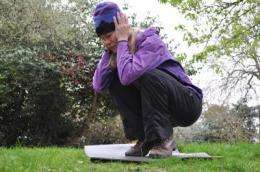WMS issues important new practice guidelines for prevention and treatment of lightning injuries

About 24,000 people are killed by lightning every year, with about 10 times as many people injured. The Wilderness Medical Society has issued important new practice guidelines for precautions that can lower the likelihood of being killed or injured and recommendations for effective medical treatments post-strike. These guidelines appear in the September issue of Wilderness & Environmental Medicine.
Updating the 2006 guidelines, a panel of experts chosen for their clinical or research experience convened at the 2011 Annual Meeting of the Wilderness Medical Society in Snowmass, CO. Their task was to develop evidence-based practice guidelines for the prevention and treatment of lightning injuries to guide clinicians and disseminate knowledge about best practices.
"With some basic prevention strategies and common sense the vast majority of lightning injuries can be prevented," commented Chris Davis, MD, Wilderness Fellow and Clinical Instructor, University of Colorado Hospital, Department of Emergency Medicine, Aurora, CO.
Lightning-related deaths in the United States have declined consistently over the last 50 years to approximately 40 per year. More than 80% of victims are male and most deaths occur in individuals between 20 and 45 years of age. The prevention strategies outlined in these guidelines have the potential to reduce these fatalities and injuries further.
Using the American College of Chest Physicians classification scheme for the quality of evidence and recommendations, the panel identified 5 stronger and 2 weaker recommendations concerning prevention strategies. These include taking shelter when thunder is heard and avoiding bodies of water during lightning events.
The mechanism of sudden death from lightning strike is simultaneous cardiac and respiratory arrest. In many victims, despite return of spontaneous circulation (ROSC), a second cardiac arrest may occur if ventilation is not supported. This highlights the need for a "reverse triage" system for lightning strike victims where priority is initially given to those individuals without vital signs or spontaneous respirations. This and 17 other strategies for the treatment of injuries are included in the guidelines.
The panel concludes that "This article provides a summary of available evidence for the prevention and treatment of lightning injury. Most available data are based on small, retrospective case reports or series because the prospective study of lightning injuries is not logistically and ethically possible. Although the strength of the overall evidence is limited, the authors believe that many recommendations can be strongly supported as there is little risk of associated harm."
More information: "Wilderness Medical Society Practice Guidelines for the Prevention and Treatment of Lightning Injuries" by Chris Davis, MD; Anna Engeln, MD; Eric Johnson, MD; Scott E. McIntosh, MD, MPH; Ken Zafren, MD; Arthur A. Islas, MD, MPH; Christopher McStay, MD; William 'Will' R. Smith, MD; and Tracy Cushing, MD, MPH. It appears in Wilderness & Environmental Medicine, Volume 23, Issue 3 (September 2012) published by Elsevier. As a service to the medical community the article is freely available at www.wemjournal.org/article/S10 … (12)00180-9/fulltext


















